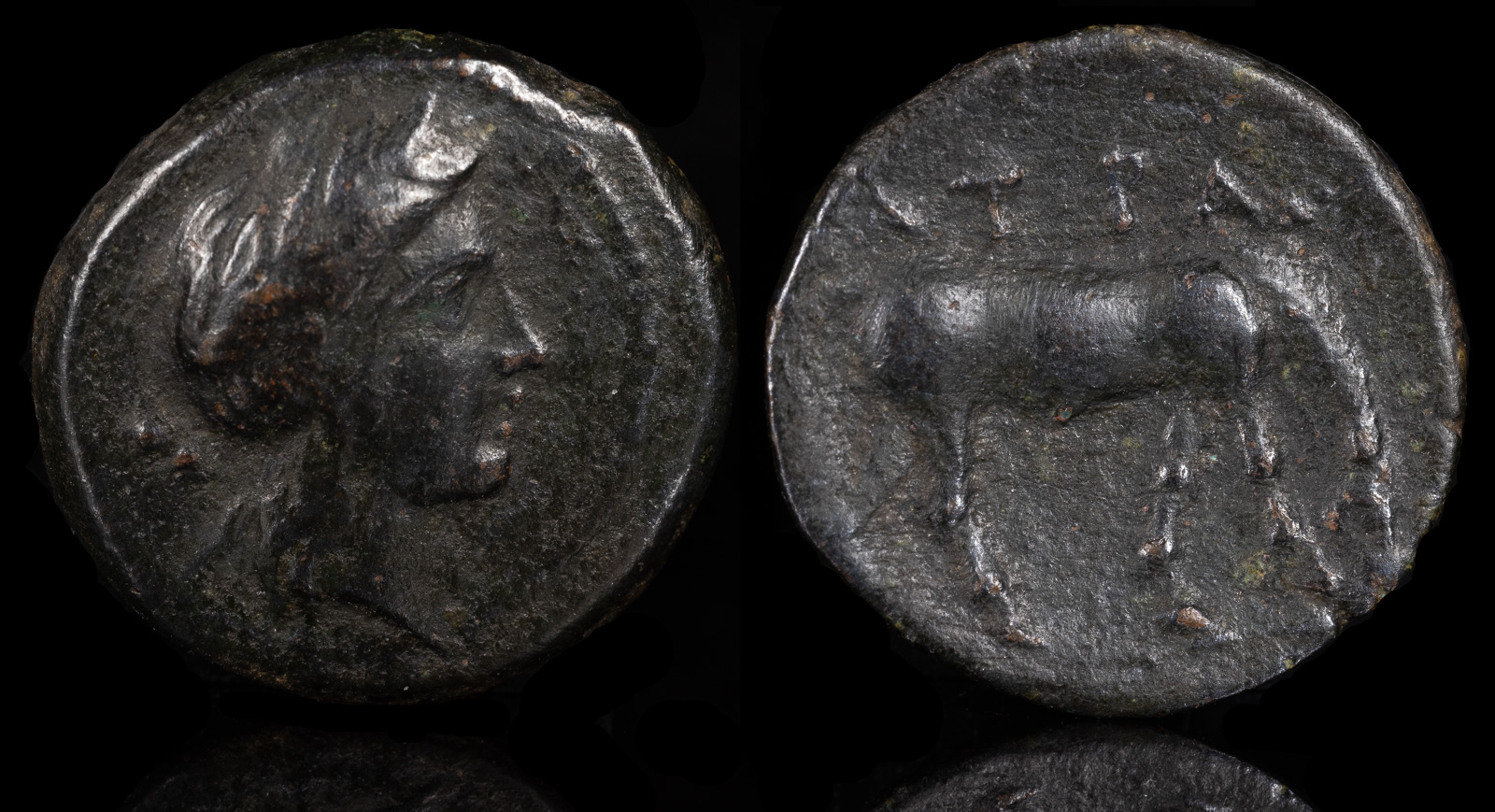
Thessaly, Atrax
Late 3rd – early 2nd centuries BCE
Æ 2.11g, 15mm, 6h
Laureate head of the nymph Boura (or Apollo) to right; hoof of horse to left (or quiver over shoulder)
Horse standing to right, head lowered; ΑΤΡΑ above, [ΓΙΩΝ below]
Cf. BCD Thessaly II 58.11-12 (Boura, horse’s hoof); HGC 4, 358 (Apollo, quiver).
Ex J. Greiff Collection
One day, many years ago, a group of Thessalians was sitting around the table and lamenting the fact that few knew of Atrax, their city. It had been founded long before by Atrax, a river god. It was then that they decided to mint a lot of coins, because in future years people would remember them.
Coins of Atrax are relatively common, but there are few mentions of it in ancient record. Strabo mentioned it four times, but only in saying that it was there. We’ve located the ruins today, so we definitely know the city existed. They just must have been very quiet.
The horse on this coin is typical of Thessaly, who were famous for their horses. The obverse is more controversial and may depict Apollo or the local nymph Boura.
326 BCE
The Romans under T. Quinctius Flamininus besieges Atrax, but fail to take it.
Antiochos III takes Atrax, by then a Roman stronghold, and Medeion.